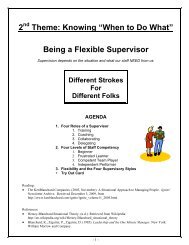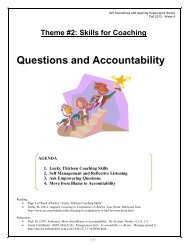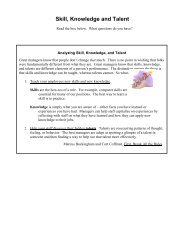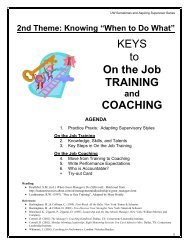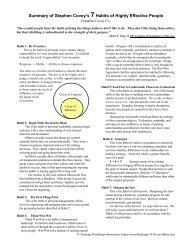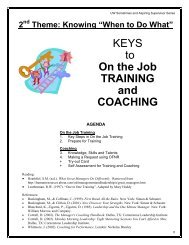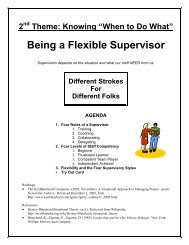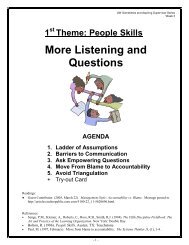Introduction to Integral Theory and Practice IOS Basic and the AQAL ...
Introduction to Integral Theory and Practice IOS Basic and the AQAL ...
Introduction to Integral Theory and Practice IOS Basic and the AQAL ...
You also want an ePaper? Increase the reach of your titles
YUMPU automatically turns print PDFs into web optimized ePapers that Google loves.
spiral of development, helping you <strong>to</strong> disidentify with a lower stage so that <strong>the</strong> next<br />
higher stage can emerge, until you can stably remain at higher levels of<br />
awareness on an ongoing basis, whereupon a passing state has become a<br />
permanent trait. These types of higher-states training, such as meditation, are a<br />
part of any integral approach <strong>to</strong> transformation.<br />
In short, you cannot skip actual stages, but you can accelerate your growth<br />
through <strong>the</strong>m by using various types of <strong>Integral</strong> Transformative <strong>Practice</strong>s, <strong>and</strong><br />
<strong>the</strong>se transformative practices are an important part of <strong>the</strong> <strong>Integral</strong> Approach.<br />
What Type: Boy or Girl?<br />
The next component is easy: each of <strong>the</strong> previous components has a<br />
masculine <strong>and</strong> feminine type.<br />
There are two basic ideas here: one has <strong>to</strong> do with <strong>the</strong> idea of types<br />
<strong>the</strong>mselves; <strong>and</strong> <strong>the</strong> o<strong>the</strong>r, with masculine <strong>and</strong> feminine as one example of types.<br />
Types simply refers <strong>to</strong> items that can be present at virtually any stage or state.<br />
One common typology, for example, is <strong>the</strong> Myers-Briggs (whose main types are<br />
feeling, thinking, sensing, <strong>and</strong> intuiting). You can be any of those types at<br />
virtually any stage of development. These kind of “horizontal typologies” can<br />
be very useful, especially when combined with levels, lines, <strong>and</strong> states. To show<br />
what is involved, we can use “masculine” <strong>and</strong> “feminine.”<br />
Carol Gilligan, in her enormously influential book In a Different Voice, pointed<br />
out that both men <strong>and</strong> women tend <strong>to</strong> develop through 3 or 4 major levels or<br />
stages of moral development. Pointing <strong>to</strong> a great deal of research evidence,<br />
Gilligan noted that <strong>the</strong>se 3 or 4 moral stages can be called preconventional,<br />
conventional, postconventional, <strong>and</strong> integrated. These are actually quite similar <strong>to</strong><br />
<strong>the</strong> 3 simple developmental stages we are using, this time applied <strong>to</strong> moral<br />
intelligence.<br />
<strong>Introduction</strong> <strong>to</strong> <strong>Integral</strong> <strong>Theory</strong> <strong>and</strong> <strong>Practice</strong>. Page 14



